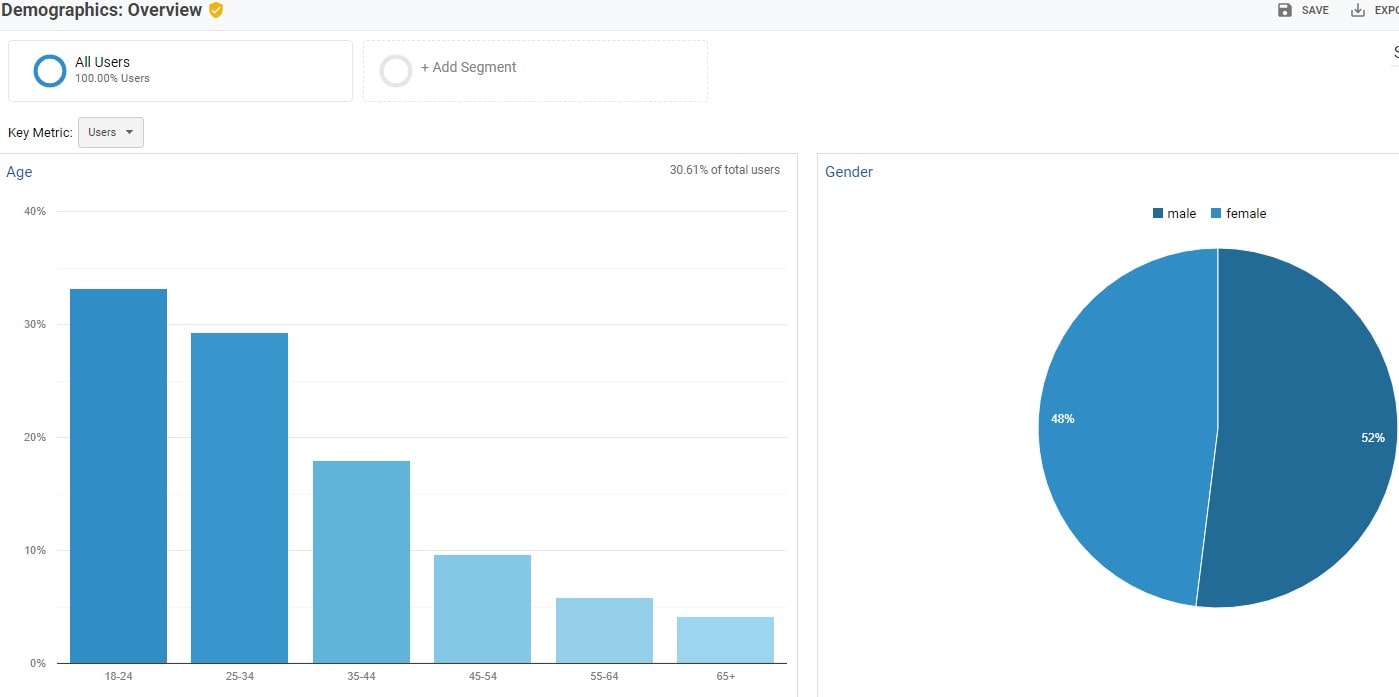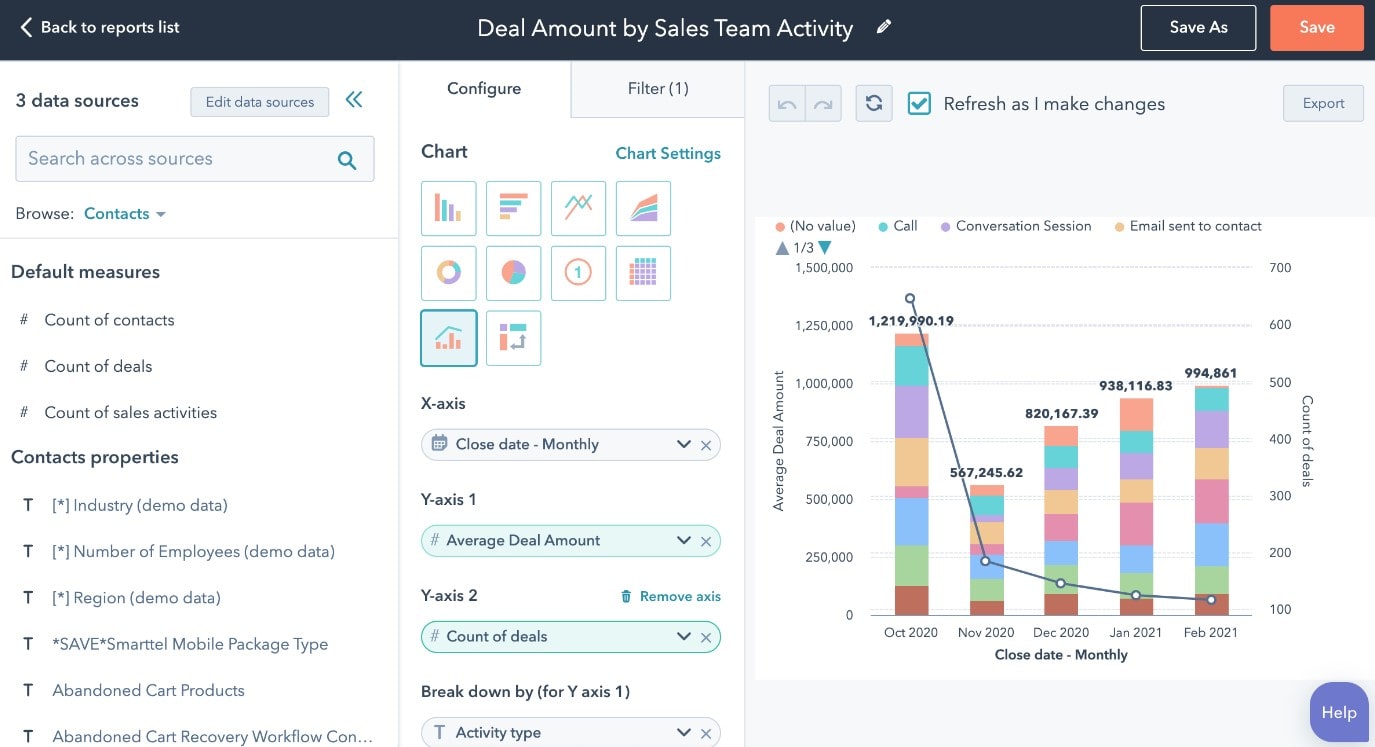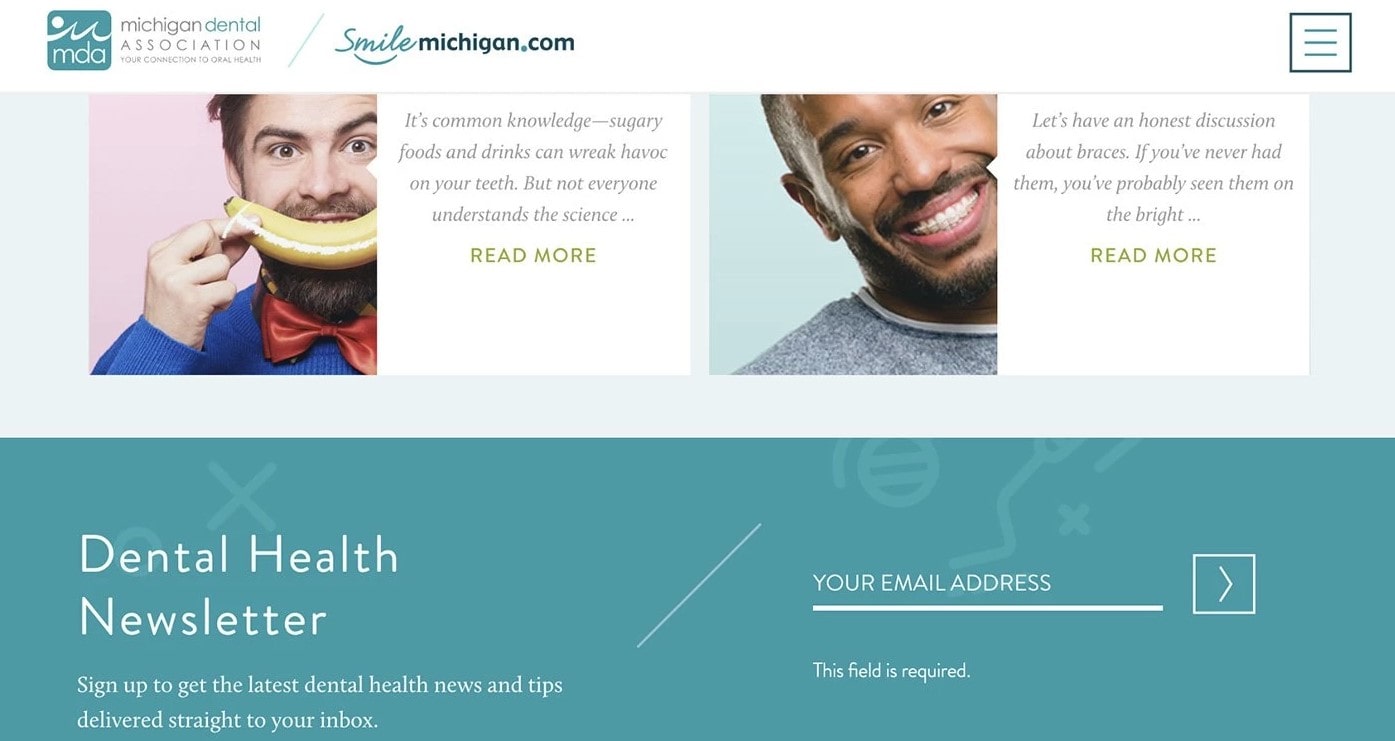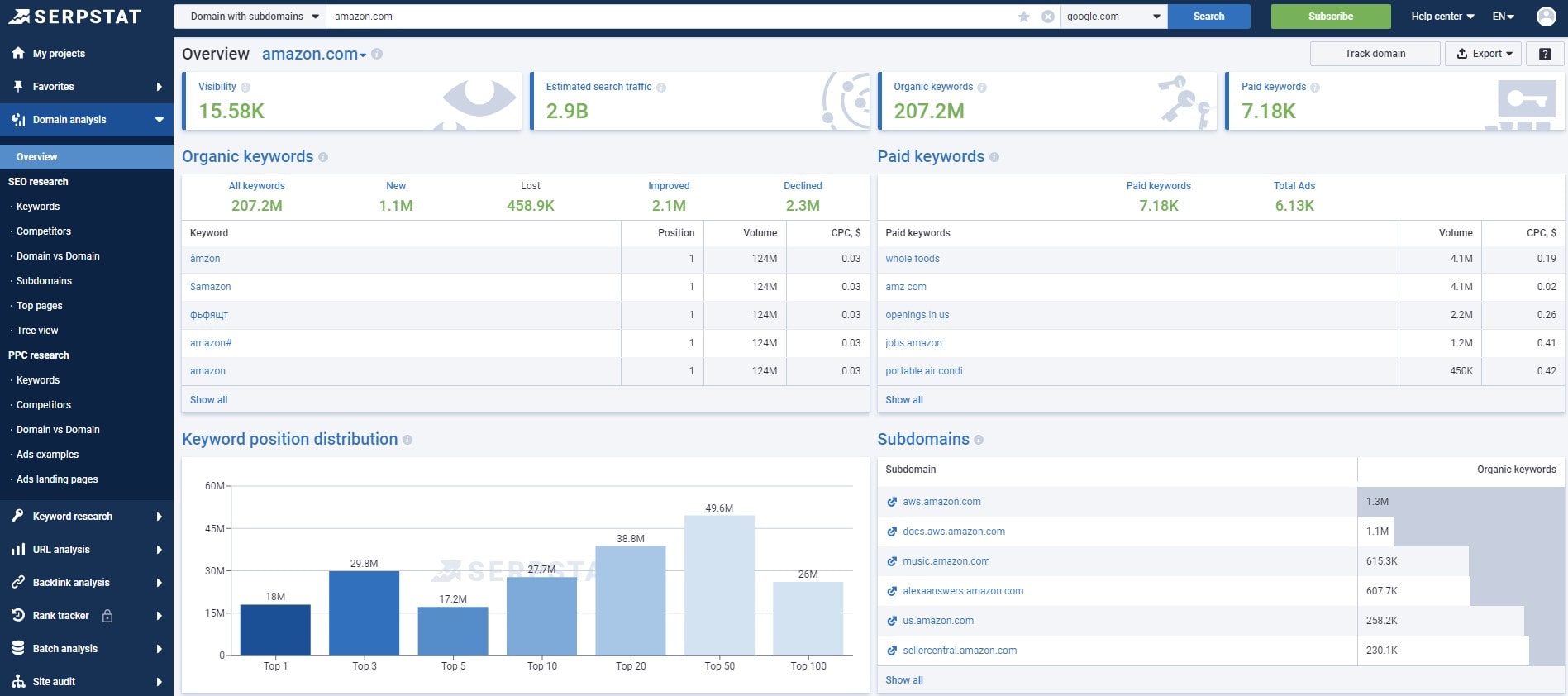Inbound marketing—this is the strategy that savvy businesses embrace to draw potential customers to their products or services. Unlike traditional marketing methods, inbound marketing revolves around creating meaningful connections, building trust, and offering value that’s tailored to individual needs. It’s an approach that’s aligned with the ever-changing demands of today’s digital landscape.
Here’s what sets inbound marketing apart:
- Customer Focus: Centering strategies on the customer’s specific needs and interests
- Content Creation: Crafting high-value content that educates and engages
- Personalization: Offering tailored solutions that resonate with individual prospects
Plerdy tool for CRO & UX can enhance this connection with potential customers by providing insights to improve user experience, boosting conversion rates, and ensuring an optimized engagement. Click here to explore Plerdy’s vast array of features and elevate your inbound marketing strategies today! ⚡

The marriage of sophisticated techniques and empathetic communication forms the crux of inbound marketing. It’s a dance of innovation, refinement, and human connection that transcends traditional barriers. Join the movement and let your business thrive in this dynamic landscape. ?
What is inbound marketing?
Inbound marketing, a strategic alignment of content creation, social media, and branding, focuses on drawing customers to products and services organically. Unlike traditional marketing strategies that reach out to potential customers, inbound marketing entices and engages customers by delivering valuable content tailored to their needs and interests. This approach aligns marketing materials with customer interests, creating a natural pull effect that attracts customers in.
For instance, in the healthcare niche, inbound marketing might involve creating informative blog posts on preventive care, thus engaging readers seeking guidance on maintaining their health. Similarly, a tech company might offer in-depth tutorials on software usage, satisfying customers’ thirst for knowledge.
Key elements of inbound marketing include:
- Content Creation: Producing high-quality, relevant content that resonates with potential customers, addressing their concerns, desires, and needs.
- Social Media Engagement: Utilizing platforms like Facebook, Twitter, and LinkedIn to share and promote content, fostering community engagement.
- Lead Nurturing: delivering prospective consumers the appropriate content at the appropriate moment, based on their previous contacts and behavior, to help them through the purchasing process.
Examples of inbound marketing strategies across specific niches highlight the approach’s versatility and effectiveness. A financial planning firm might offer free eBooks on retirement planning. A travel agency could create engaging videos showcasing breathtaking destinations. A fitness brand might host interactive webinars on health and wellness.
The core of inbound marketing is a commitment to understanding your audience and delivering content that draws them in. It’s about engaging customers by providing value, not merely promoting a product. In leveraging content that resonates with your target audience, inbound marketing shifts the paradigm from a hard sell to a customer-focused journey, naturally drawing consumers in through relevance, interest, and engagement.
10 Tips for Successful Inbound Marketing
Perusing the compendium of “What is Inbound Marketing? 10 Tips,” it’s crystal clear that this approach isn’t just a flash in the pan; it’s a holistic strategy that fundamentally transforms customer engagement. From leveraging high-quality content to employing intricate SEO practices, the tenets outlined offer a comprehensive roadmap for inbound marketing neophytes and mavens alike. Yet, as the adage goes, the devil is in the details; the true efficacy of your inbound initiatives will hinge on nuanced execution and ongoing fine-tuning.
Inbound Marketing Tip #1: Define Your Target Audience

Defining your target audience stands as a cornerstone in crafting a successful inbound marketing strategy. Understanding who you’re reaching out to helps in creating content that resonates, engages, and ultimately, converts.
Take a tech startup specializing in innovative eco-friendly gadgets. By zeroing in on tech-savvy, environmentally conscious individuals, they can develop content that speaks directly to that audience’s interests, values, and needs.
Here’s a step-by-step process to define your target audience for inbound marketing:
- Identify Demographics: Understand age, gender, income, education, and occupation of your potential customers.
- Recognize Psychographics: Dive into their lifestyle, values, and interests.
- Analyze Customer Needs: What problems can your product or service solve for them?
- Evaluate Customer Behavior: How do they interact with your brand or similar brands online?
- Assess Geographic Factors: Understand where they live, work, and hang out online.
Companies like Tesla have excelled in defining their target audience by focusing on individuals interested in cutting-edge technology and sustainability. They create content and marketing strategies that not only showcase their innovative electric cars but also align with the larger goal of a greener planet.
In the competitive beauty industry, brands like Glossier have defined their audience by focusing on those who prefer simple, easy-to-use products. They’ve grown by creating content that reflects a minimalist and natural approach to beauty.
Remember, narrowing down your audience doesn’t limit your reach; it amplifies your voice to those most likely to respond. It creates an environment where your marketing content is tailor-made for a group of individuals who find value in what you’re offering. By defining your target audience, you’re laying the groundwork for a more focused, relevant, and effective inbound marketing campaign. It’s the driving force that turns your content into a bridge between your brand and the people who need it most.
Inbound Marketing Tip #2: Create High-Quality Content
Creating high-quality content is at the core of inbound marketing, a central cog in the wheel that keeps the entire mechanism of audience engagement, retention, and conversion in motion. Exceptional content does more than simply inform; it inspires, persuades, and builds a lasting connection.
Consider a fitness brand aiming to engage health-conscious individuals. Crafting content that goes beyond standard workout routines – for example, providing comprehensive guides on nutrition, mental wellness, and community support – makes a difference.
To achieve this, follow these principles:
- Understand Your Audience: Tailor content to the specific needs and interests of your target audience.
- Deliver Value: Offer unique insights or solutions that your audience can’t easily find elsewhere.
- Ensure Consistency: Maintain a consistent voice and quality across all content platforms.
- Use Engaging Visuals: Supplement your written content with captivating images or videos.
- Tell a Story: Weave your information into a narrative that connects with the reader on an emotional level.
Nike’s “Just Do It” campaign is a classic example of high-quality content that transcends mere advertising. By weaving motivational stories with top-notch visuals, they have created a movement that resonates with athletes and non-athletes alike.
In the culinary industry, websites like Tasty have turned cooking into an art form, with visually stunning videos and well-researched recipes. They have transformed the mundane task of cooking into an engaging experience.
Creating high-quality content is not a one-size-fits-all task. It demands a deep understanding of your audience’s needs, creativity, and a willingness to go the extra mile. Investing in this approach will not only elevate your content but also turn your brand into a trusted source, a go-to destination where readers know they’ll find more than information – they’ll find inspiration and engagement. It’s this commitment to quality that sets leading brands apart, allowing them to thrive in the competitive landscape of inbound marketing.
Inbound Marketing Tip #3: Utilize SEO Strategies

Utilizing SEO strategies in inbound marketing goes beyond mere keyword stuffing or chasing algorithms. It’s an art that marries technical precision with content that resonates. It’s about making sure that when a prospective customer searches for a solution, your brand is right there, ready to assist.
Consider a local coffee shop that wants to stand out in a crowded city. By optimizing their website with local SEO strategies, using keywords like “best organic coffee in [City Name],” they can attract locals and tourists alike. A SaaS company offering project management tools could utilize long-tail keywords to draw in project managers searching for specific functionalities.
The right SEO strategies to utilize in inbound marketing include:
- Keyword Research and Optimization: Identify and use keywords that reflect what your target audience is searching for. For example, a skincare brand might focus on terms like “sustainable skincare products” or “gentle face cleanser.”
- Quality Backlink Building: Encourage reputable sites to link to your content, boosting credibility and visibility.
- Optimizing Site Speed and Mobile Experience: Ensure your site loads quickly and is navigable on various devices, enhancing user experience.
- Utilizing Meta Descriptions and Alt Text: Write compelling meta descriptions and use alt text for images, enhancing search engine understanding.
In the healthcare industry, a medical practice might produce informative articles on common medical conditions, optimized for search but also adding value to patients. An online fashion retailer could create style guides, utilizing SEO to attract those searching for seasonal fashion tips.
The elegance of SEO in inbound marketing lies in its dual focus – it’s not just about ranking higher but about reaching the right people with the right content at the right time. It’s a delicate dance between technology and human connection, a blend of data-driven insights and genuine engagement that turns searches into relationships.
Inbound Marketing Tip #4: Engage on Social Media
Engaging on social media isn’t just about blasting your followers with promotional messages. It’s about fostering genuine connections, sparking conversations, and creating a community around your brand. In the world of inbound marketing, social media interaction is a touchpoint that can turn indifferent followers into passionate clients.
A fitness coach can use Instagram to share workout videos and healthy recipes, encouraging followers to share their fitness journeys. An independent bookstore might host Twitter chats about favorite authors, connecting with readers and building a literary community.
Here’s how to effectively engage on social media within the inbound marketing framework:
- Create Shareable Content: Create content that speaks to your audience, such as instructional manuals or motivational tales. For instance, a gardening business might give advice on organic gardening while inspiring followers to post pictures of their own gardens.
- Respond to Comments and Messages: Actively engage with your followers by responding to their comments and direct messages. A pet supply shop may request that consumers submit photos of their animals using its products and leave comments about them.
- Host Contests and Giveaways: Encourage participation and excitement by hosting contests or giveaways. A travel agency might organize a photo contest where participants share their best vacation memories.
- Share User-Generated Content: Feature content created by your community, such as testimonials or photos using your products. A cosmetic brand might share before-and-after photos from customers who have used their skincare line.
Through authentic engagement on social media, brands in various niches, from technology to fashion, are fostering relationships that go beyond transactions. It’s about building a community, a virtual gathering place where your brand and customers can connect, converse, and grow together. Social media engagement is a powerful bridge that connects brands to their audience’s hearts in the world of inbound marketing.
Inbound Marketing Tip #5: Implement Effective Email Campaigns

Implementing effective email campaigns is vital in the ever-evolving landscape of inbound marketing. Gone are the days of generic newsletters sent to all your subscribers. Today, email marketing demands personalization, value, and thoughtful segmentation to truly engage with your audience.
Imagine a local farmer’s market. They don’t just email everyone on their list the same information. They send recipes to the cooking enthusiasts, gardening tips to the plant lovers, and exclusive discount codes to loyal customers. This strategy ensures that the content resonates with each subscriber, turning casual readers into engaged customers.
Here’s how to create meaningful connections through your email campaigns for inbound marketing:
- Segment Your Audience: Divide your subscribers into smaller groups based on their interests, purchasing history, or engagement levels. For instance, a software company can send targeted tutorials to new users while offering advanced tips to long-term customers.
- Personalize the Experience: Use the recipient’s name, reference past interactions, or recommend products based on previous purchases. A clothing retailer might suggest accessories that match a recently bought dress.
- Deliver Value: Offer content that educates, entertains, or solves a problem for the reader. An investment firm could provide weekly market insights tailored to individual investment profiles.
- A/B Test for Success: Experiment with different subject lines, visuals, or calls to action to see what resonates best with your audience. A wellness brand might test different approaches to promoting a mindfulness workshop.
Email campaigns in the context of inbound marketing aren’t merely for the purpose of making sales. They are about establishing trust, offering value, and fostering a relationship with your audience through relevant and engaging content. By implementing these strategies, businesses from diverse niches—be it healthcare, education, or entertainment—can create email experiences that not only captivate their readers but also inspire loyalty and action.
Inbound Marketing Tip #6: Leverage Video Marketing
Leveraging video marketing in the domain of inbound marketing means more than just creating visually appealing content. It’s about connecting with your audience on a deeper level, conveying your brand’s message, and driving engagement.
For instance, a fitness company might use high-energy video content to inspire and motivate, offering quick workout routines or diet tips. An educational platform could develop a series of instructional videos breaking down complex topics into easy-to-understand segments. In the travel industry, immersive videos can transport viewers to exotic locations, sparking wanderlust and driving bookings.
Here’s a clear path to successfully leverage video marketing in various niches for inbound marketing:
- Tell a Story: Whether it’s a behind-the-scenes look at a product’s creation or a heartfelt testimonial, storytelling creates an emotional connection. A handmade jewelry brand might share the artisan’s process, showcasing the passion and craft that goes into each piece.
- Educate Your Audience: Offer tutorials, guides, or how-to videos that provide value. A tech company could produce step-by-step guides for setting up their devices, fostering user confidence and satisfaction.
- Inspire Action with Strong CTA: Encourage viewers to take the next step with a clear and compelling call to action. A non-profit organization might use impactful footage to encourage donations or volunteer sign-ups.
- Utilize Live Streaming: Engage with your audience in real-time. A cooking blog might host live cooking classes, answering questions on the spot, and building a community.
By focusing on these strategies, video content becomes more than mere visual entertainment; it turns into a robust tool in the inbound marketing toolkit. From finance to fashion, healthcare to hobbies, video marketing’s versatility and potential reach make it a must-use medium for any brand striving to create meaningful connections, boost engagement, and drive results.
Inbound Marketing Tip #7: Measure and Analyze Performance

Measuring and analyzing performance is the cornerstone of any successful inbound marketing campaign. In content marketing, for example, a well-designed dashboard with key metrics can provide clear insights into what resonates with your audience.
Consider an e-commerce brand aiming to boost its content’s engagement. By tracking metrics like click-through rates, time spent on pages, and conversion rates, they can see which products are catching customers’ attention.
Here’s a roadmap for performance measurement across different niches for inbound marketing:
- Set Clear Goals: Define what success looks like for your campaign. If a financial services firm wants to boost client engagement, they might focus on metrics like newsletter open rates and webinar attendance.
- Choose the Right Tools: Utilize analytics platforms that fit your needs. A digital publishing company might use heat maps to understand reader behavior, optimizing layouts and content placement.
- Regularly Monitor and Adjust: Keep tabs on your campaign’s progress, and don’t be afraid to pivot. A health and wellness blog might discover that video content is outperforming written articles, leading them to shift their focus accordingly.
Performance measurement isn’t a one-time event but an ongoing process that helps you fine-tune your strategies. Whether it’s a B2B tech startup gauging lead generation success or a fashion retailer monitoring social media engagement, understanding your audience’s behavior and preferences enables you to create content that connects, engages, and ultimately drives your business forward.
Inbound Marketing Tip #8: Provide Personalized Experiences
In the bustling digital landscape, personalized experiences stand out as a key differentiator in inbound marketing. By tailoring content to individual preferences and behaviors, brands create a deeper connection with their audience.
Take a fitness app that offers customized workout plans. By analyzing user preferences and workout history, the app crafts personalized routines. This unique, tailored approach not only boosts user engagement but also fosters brand loyalty.
Here’s how businesses across various industries can offer personalized experiences through content for inbound marketing:
- Use Behavioral Data: A subscription box service can analyze previous purchases to suggest products that align with a customer’s taste.
- Employ Customer Segmentation: Divide your audience into groups based on demographics or interests. A travel agency might send targeted newsletters featuring family-friendly destinations to parents, while highlighting adventure trips to younger subscribers.
- Leverage AI and Machine Learning: Advanced technologies allow brands like online bookstores to suggest reading material based on previous purchases, reviews, and browsing history.
- Implement Interactive Elements: Quizzes or interactive videos allow audiences to choose their path. A skincare company might, for instance, provide a survey that yields tailored product suggestions.
By zeroing in on individual preferences, marketers craft experiences that resonate on a personal level. From a digital magazine creating curated reading lists to a B2B software company offering personalized demos, the art of personalization extends across all industries. It’s more than a marketing tactic—it’s a customer-centric approach that can transform casual browsers into loyal advocates for your brand.
Inbound Marketing Tip #9: Collaborate with Influencers

Collaborating with influencers has become a dominant force in inbound marketing, propelling content to a broader audience in an authentic, trustworthy way. Brands team up with influencers to create personalized narratives, driving engagement and enhancing credibility.
Let’s explore this through specific examples for inbound marketing:
- A skincare brand collaborates with beauty bloggers for video tutorials on proper skincare routines.
- An adventure travel company works with outdoor enthusiasts to share thrilling expeditions on Instagram.
How do you engage influencers in your inbound marketing campaign? Here’s a step-by-step guide:
- Identify the Right Influencers: Focus on those who align with your brand values. A sustainable clothing brand should pair with eco-friendly fashion influencers.
- Set Clear Goals and Expectations: Define what success means for both parties. A tech company might aim for increased downloads of their app.
- Create a Collaboration Agreement: Lay out all details, including compensation, content ownership, and publication dates.
- Monitor and Measure Success: Keep track of performance metrics such as engagement rates, leads generated, and sales conversions.
Successful influencer collaborations hinge on the authentic connection between the influencer, the brand, and the target audience. For instance, a health and wellness company might collaborate with fitness influencers who genuinely use their products, thus ensuring authentic endorsements.
The influencer collaboration approach amplifies inbound marketing strategies by turning content into relatable stories and experiences. When done right, it builds brand affinity, drives customer loyalty, and opens up fresh avenues for engagement and growth. It’s not just about reaching a larger audience; it’s about connecting with the right audience in a way that resonates and compels them to act.
Inbound Marketing Tip #10: Offer Free Resources or Trials
Offering free resources or trials has evolved as a masterstroke in the sphere of inbound marketing. By providing valuable content or a glimpse of your product without immediate cost, you pull in potential customers, allow them to explore your offerings, and kindle a relationship that might flourish into a long-term partnership.
Here are some instances where free trials or resources play a critical role:
- A software company offers a 30-day free trial to let businesses test functionalities.
- An educational platform provides free ebooks or webinars to engage aspiring learners.
The underlying strategy in offering free resources revolves around creating a trust-based connection and enhancing user experience. Here’s how you can effectively implement this inbound marketing strategy:
- Identify Your Target Audience: Pinpoint those who would benefit most from your product or content.
- Design High-Quality Resources: Create ebooks, guides, or free trials that genuinely add value.
- Implement a Seamless Access Pathway: Allow easy access to your resources without unnecessary hurdles.
- Follow Up Effectively: Engage users post-trial or resource download to gather feedback and encourage further interaction.
Companies like Adobe, offering free trials of their creative software, or HubSpot, presenting an array of free marketing guides, set sterling examples. They not only introduce users to their tools but also support them with instructional content, fostering a community that’s inclined to explore paid options.
The synthesis of inbound marketing with free resources is a win-win for both businesses and customers. It showcases your expertise, builds credibility, and offers a tangible demonstration of what you bring to the table. More than a sales pitch, it’s a hand extended in partnership, inviting potential customers to explore, engage, and eventually invest in what you offer. This approach aligns perfectly with the nature of inbound marketing – attracting, educating, and converting leads through genuine value and engagement.
Conclusion about Inbound Marketing
In the dynamic dance of inbound marketing, a business serves its customers by providing tailor-made solutions. Through the creation of high-value content, meticulous selection of personalized offers, and persistent refinement of strategies, it orchestrates connections that go beyond mere transactions. This isn’t just about advertisements; it’s about building positive relations with customers, offering them choices that speak to their particular needs and interests.
In the journey of inbound marketing, tools such as the Plerdy tool SEO & UX analysis become indispensable allies. From understanding abandonment rates to producing detailed reports that help refine strategies, this tool pushes the boundaries of what’s possible. Here’s what you can accomplish:
- Analyze and Optimize: Leverage powerful analysis to convert prospects
- Monetize Your Momentum: Capture leads and create effective deals
- Build and Betreiben: Baue and maintain a robust online presence
Why settle for less when you can seize the opportunity to excel with inbound marketing? ⚡ Explore Plerdy’s wide range of features for SEO & UX analysis and begin the exciting journey today. Embrace the power of modern marketing and let your business resonate with clients across all ages and locations. It’s your time to shine!?
